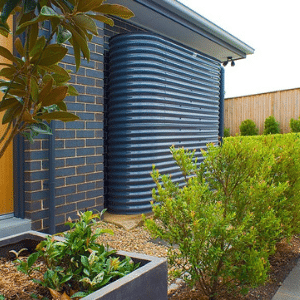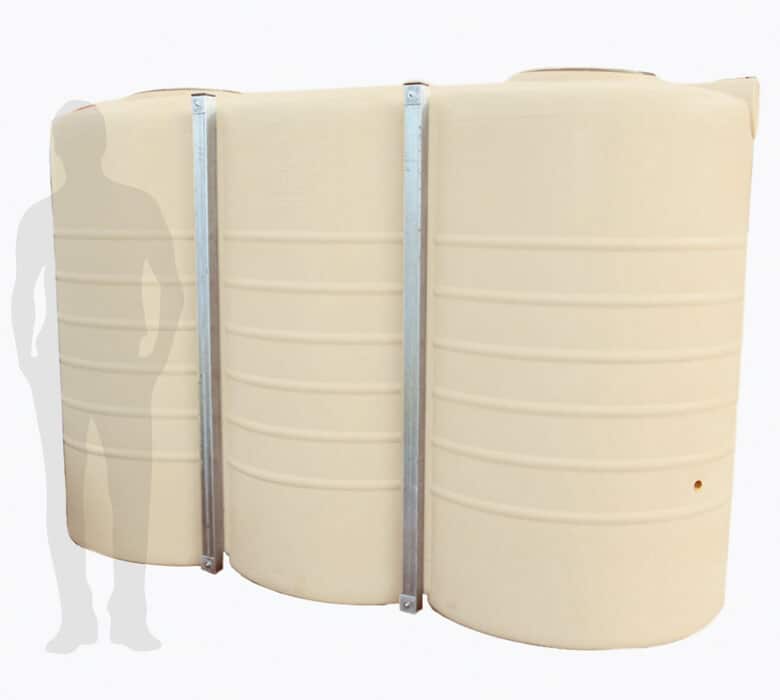Best Slimline Water Tanks: Resilient and Compact Water Storage Options
Best Slimline Water Tanks: Resilient and Compact Water Storage Options
Blog Article
Recognizing the Relevance of Rainwater Containers in Drought-Prone Regions for Water Protection
In areas vulnerable to long term dry spells, the role of rain storage tanks in reinforcing water protection is a subject of growing relevance. As neighborhoods grapple with the obstacles of water deficiency, comprehending the significance of these containers surpasses simple collection of rainwater. Rain tanks offer as a crucial tool in minimizing the effect of water shortages by supplying a sustainable resource of water for various demands. The true worth of rain tanks expands far past simple storage; it incorporates resilience-building procedures and the promotion of long-lasting water conservation techniques. This multifaceted strategy to water safety and security warrants a more detailed evaluation of the role rain tanks play in making certain a trusted supply of water throughout times of drought.
Advantages of Rainwater Tanks
Making use of rain storage tanks offers a lasting remedy for increasing water supply and improving water safety and security in residential and business setups. One of the primary advantages of rain storage tanks is their ability to lower dependence on mains water supply.

Rain Harvesting Techniques
Rain harvesting techniques incorporate a series of approaches developed to effectively accumulate and store rainwater for numerous functions, adding to water preservation and sustainability. One common technique is the setup of roof catchment systems, where rain is collected from the roofing of a structure and routed to a tank. This technique is reasonably basic and cost-effective. One more preferred technique is using above-ground or below ground storage space tanks to store rain for later use. These containers come in different sizes and products to suit different needs and can be linked to the existing pipes system for very easy accessibility.

Furthermore, rainfall gardens and permeable sidewalks are innovative strategies that include landscape design or paving surfaces in a manner that permits rainwater to percolate right into the ground, renewing groundwater gets. Furthermore, shape farming and terracing are agricultural techniques that help catch rain and avoid dirt disintegration in uneven terrain. By applying these diverse rainwater harvesting strategies, neighborhoods can enhance water protection and resilience in drought-prone areas while promoting sustainable water management techniques.
Importance of Water Protection
Guaranteeing trusted access to clean and sufficient water resources is critical for sustaining human health and wellness, financial advancement, and ecological wellness. Water safety is a critical aspect of societal strength, particularly in areas susceptible to droughts and water scarcity. Adequate water security encompasses various measurements, consisting of schedule, top quality, and access of water for residential, farming, commercial, and ecological requirements.
Water safety and security plays an important function in promoting public health by reducing the occurrence of waterborne diseases and guaranteeing sanitation centers. Financially, water protection is crucial for farming efficiency, industrial operations, and overall economic growth. Slimline water tanks. Moreover, water safety is carefully linked to ecological sustainability, as it supports communities, biodiversity, and overall eco-friendly balance.
In drought-prone areas, water safety and security becomes also much more critical because of the heightened danger of water shortages. Carrying out techniques like rain harvesting, water recycling, and effective water monitoring methods can significantly improve water security in these locations. By focusing on water safety, areas can better withstand the influences of climate adjustment, population development, and other obstacles that threaten water schedule.
Enhancing Water Durability
With increasing worldwide water challenges, developing strength in water systems has actually ended up being a crucial focus for lasting development initiatives. Enhancing water durability involves implementing approaches to make sure water schedule and quality when faced with changing ecological problems, such as droughts, floods, and contamination.
One key element of boosting water durability is promoting making use of rainwater containers in drought-prone areas - Slimline water tanks. Rainwater containers work as a reliable methods of recording and keeping rain for later use, lowering reliance on limited freshwater sources throughout dry durations. By incorporating rainwater harvesting systems right into water management plans, communities can improve their ability to endure water deficiency and keep water safety and security

Sustainable Water Preservation
Amidst intensifying water challenges, the sensible management of water sources through lasting preservation techniques is crucial for ensuring lasting environmental security and social wellness. Sustainable water preservation involves the reliable use water resources to meet present requirements without jeopardizing the capacity of future generations this content to fulfill their own requirements. By applying approaches such as rain harvesting, greywater recycling, and water-efficient technologies, communities can reduce water wastage and minimize pressure on freshwater sources.
Additionally, sustainable water conservation practices contribute to ecosystem health by maintaining adequate water levels in rivers, lakes, and marshes, sustaining biodiversity, and maintaining all-natural environments. These methods also play an important function in alleviating the effects of climate change by aiding to adjust to altering precipitation patterns and water accessibility.

Final Thought
In conclusion, rainwater containers play an essential function in boosting water safety and security and strength in drought-prone areas. By utilizing rainwater harvesting strategies, communities can decrease their dependence on traditional water sources and advertise sustainable water conservation techniques. This not just helps reduce the effects of water shortage throughout dry spells but likewise adds to lasting water security and link resilience when faced with climate modification obstacles.
Report this page